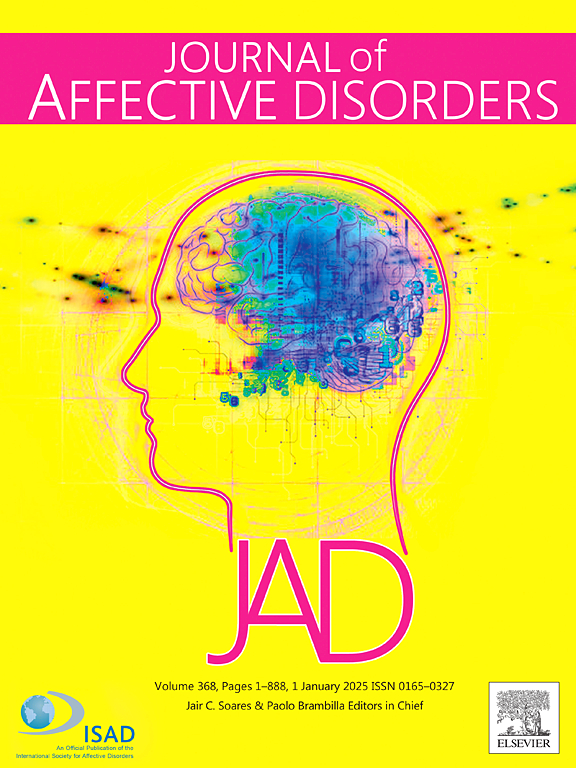Global burden of antidepressant-associated seizures from 1967 to 2023: A comparative analysis of the international pharmacovigilance database
IF 4.9
2区 医学
Q1 CLINICAL NEUROLOGY
引用次数: 0
Abstract
Background
Although antidepressants have been implicated in seizure risk, comprehensive safety data examining this risk across different antidepressants remains limited.
Methods
Data from Vigibase, an international pharmacovigilance database, encompassing 131,255,418 reports from 1967 to 2023, was analyzed. Reporting odds ratio (ROR) and information component (IC) were calculates to identify disproportionate associations between 17 antidepressants and seizures.
Results
Among 2,275,638 reports on antidepressants, 23,331 reported seizures. Antidepressants as a whole were associated with higher reporting frequency of seizures compared with all medications. Among antidepressant classes, tricyclic antidepressants (TCA; ROR [95 % CI]: 2.71 [2.58–2.84]; IC [IC0.25] 1.42 [1.34]), were the most frequently reported in combination with seizures, followed by selective serotonin reuptake inhibitors (SSRIs; 2.27 [2.22–2.32]; 1.16 [1.13]) and serotonin-norepinephrine reuptake inhibitors (SNRIs; 1.31 [1.27–1.36]; 0.39 [0.33]). Regarding individual antidepressants, agomelatine and desvenlafaxine were the only medications without a significant disproportionate association with seizures. Among the remaining antidepressants, bupropion (8.57 [8.34–8.80]; 3.04 [3.00]) and clomipramine (4.69 [4.29–5.13]; 2.20 [2.05]) had the highest disproportionality measure estimates, whereas vortioxetine and duloxetine had the lowest disproportionality in reporting. Escitalopram (2.17 [2.04–2.31]; 1.11 [1.01]), the active enantiomer of citalopram, and desvenlafaxine (0.93 [0.82–1.05]; −0.11 [−0.31]), the active metabolite of venlafaxine, were less frequently reported for seizures compared to their parent compounds.
Conclusion
Our findings align with earlier studies indicating that SNRIs and SSRIs carry a lower risk of seizures, whereas bupropion and clomipramine are linked to a higher risk. Agomelatine, vortioxetine, and SNRIs like desvenlafaxine and duloxetine may potentially be safe alternatives.
1967年至2023年抗抑郁药相关癫痫发作的全球负担:国际药物警戒数据库的比较分析
背景:虽然抗抑郁药与癫痫发作风险有关,但比较不同抗抑郁药的风险的综合安全性数据仍然有限。方法:对国际药物警戒数据库1967年至2023年131,255,418份报告的数据进行分析。使用报告优势比(ROR)和信息成分(IC)进行歧化分析,以确定17种抗抑郁药物与癫痫发作之间的显著关联。结果:在2,275,638例抗抑郁药物报告中,23,331例报告癫痫发作。与所有药物相比,抗抑郁药与更高的癫痫发作报告频率相关。在抗抑郁药类别中,三环类抗抑郁药(TCA;Ror[95 % ci]: 2.71 [2.58-2.84];IC [IC0.25] 1.42[1.34]),最常与癫痫发作合并,其次是选择性血清素再摄取抑制剂(SSRIs;2.27 (2.22 - -2.32);1.16[1.13])和血清素-去甲肾上腺素再摄取抑制剂(SNRIs;1.31 (1.27 - -1.36);0.39[0.33])。就个体抗抑郁药而言,阿戈美拉汀和地文拉法辛是唯一与癫痫发作无显著不成比例关联的药物。其余抗抑郁药中,安非他酮(8.57 [8.34-8.80]);3.04[3.00])和氯咪嗪(4.69 [4.29-5.13];2.20[2.05])的歧化率测量估计值最高,而沃替西汀和度洛西汀的歧化率最低。艾司西酞普兰(2.17 [2.04-2.31];1.11[1.01]),西酞普兰的活性对映体和地文拉法辛(0.93 [0.82-1.05];-0.11[-0.31]),文拉法辛的活性代谢物,与母体化合物相比,癫痫发作的发生率较低。结论:我们的发现与早期的研究一致,表明SNRIs和SSRIs具有较低的癫痫发作风险,而安非他酮和氯丙咪嗪具有较高的风险。阿戈美拉汀、沃替西汀和SNRIs如地文拉法辛和度洛西汀可能是潜在的安全替代品。
本文章由计算机程序翻译,如有差异,请以英文原文为准。
求助全文
约1分钟内获得全文
求助全文
来源期刊

Journal of affective disorders
医学-精神病学
CiteScore
10.90
自引率
6.10%
发文量
1319
审稿时长
9.3 weeks
期刊介绍:
The Journal of Affective Disorders publishes papers concerned with affective disorders in the widest sense: depression, mania, mood spectrum, emotions and personality, anxiety and stress. It is interdisciplinary and aims to bring together different approaches for a diverse readership. Top quality papers will be accepted dealing with any aspect of affective disorders, including neuroimaging, cognitive neurosciences, genetics, molecular biology, experimental and clinical neurosciences, pharmacology, neuroimmunoendocrinology, intervention and treatment trials.
 求助内容:
求助内容: 应助结果提醒方式:
应助结果提醒方式:


